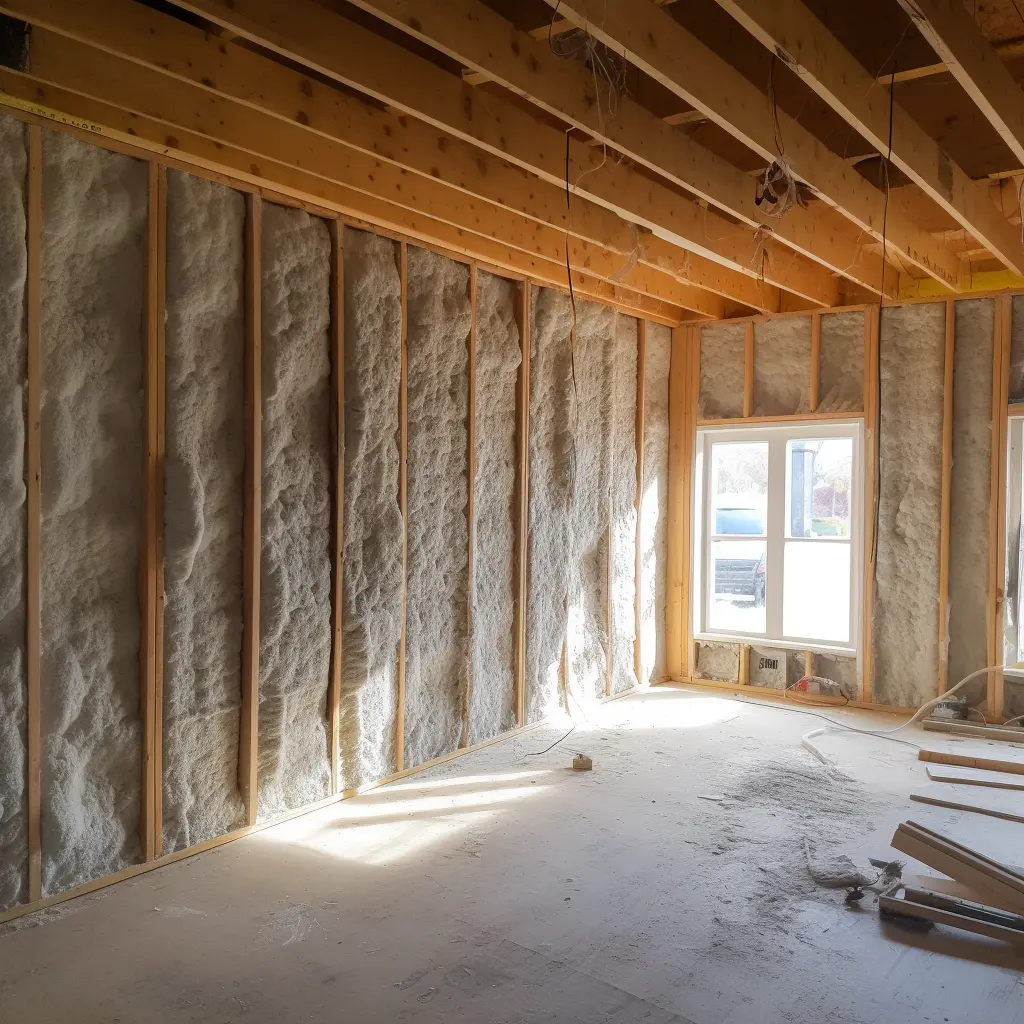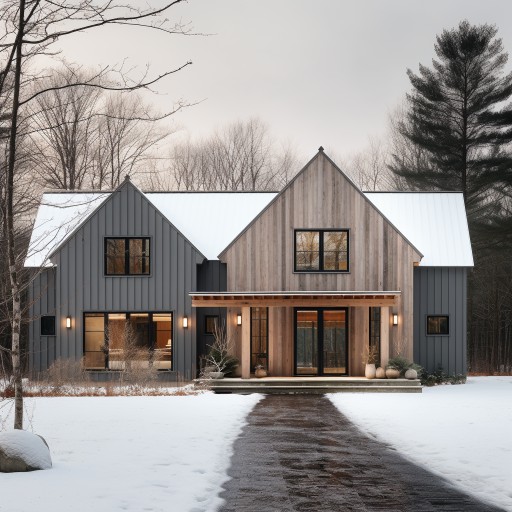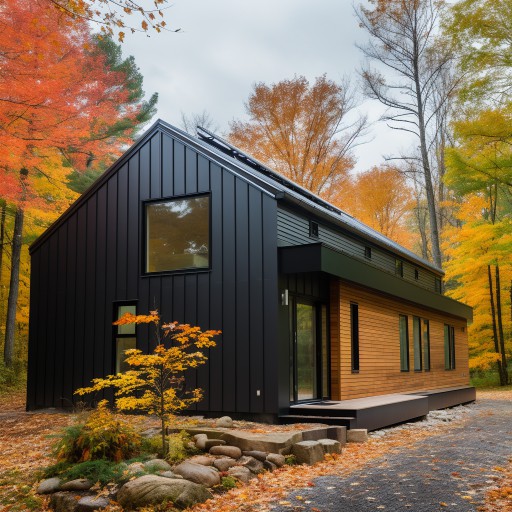Homeowners: Understanding Operational vs. Embodied Carbon

co-founder
- What Is A Carbon Footprint?
- Understanding Operational Carbon
- Understanding Embodied Carbon
- Strategies for Reducing Embodied Carbon
- Why Both Operational and Embodied Carbon Matter
- Actionable Steps for Homeowners
Carbon emissions are often in the headlines, but do you know how your home contributes to your carbon footprint? In the building and construction industry, reducing carbon emissions is not just a trend but a necessity. This article aims to help homeowners distinguish between operational and embodied carbon emissions when they’re decarbonizing their home and offers practical ways to reduce both.
What Is A Carbon Footprint?
A carbon footprint refers to the total amount of carbon dioxide emissions for which an individual or organization is responsible. In the context of your home, this means considering how the energy you use and the materials in your home contribute to global greenhouse gas emissions. Reducing a house's carbon footprint can make a meaningful difference for your pocketbook and the environment.
Homeowner Tip: Use an online carbon footprint calculator specifically for homes to understand where you stand.

Understanding Operational Carbon
Operational carbon pertains to the emissions resulting from daily activities like heating, cooling, and using electrical appliances in your home. These emissions occur throughout the lifecycle of your home and are directly tied to your energy consumption. Actionable Tip: Track your monthly utility bills as a rough measure of your operational carbon output.
Addressing Operational Carbon
Reducing operational carbon in your home is a vital part of combating climate change and reducing your energy bills. Operational carbon refers to the emissions generated by your day-to-day activities, such as heating, cooling, and powering your home. Luckily, there are some quick and effective ways to make a difference.
Making the Switch to Energy Star Appliances
Why It's Important:
Energy Star appliances are designed to be more energy-efficient than their non-certified counterparts. They consume less electricity and water, contributing to a lower carbon footprint and lower utility bills.
How to Take Action:
- Inventory your current appliances and note which are due for an upgrade. Bigger systems may warrant looking at too. Energy-efficient HVAC systems have really improved in the last few years.
- When shopping, look for the Energy Star label. This certification is a trustworthy indicator of energy efficiency.
- Consider both upfront cost and the long-term savings from reduced energy consumption.
Extra Savings Tip:
Check if there are any available rebates or incentives in your area for purchasing Energy Star appliances. This can further offset the cost of switching.
Lighting the Way with LED Bulbs
Why It's Important:
LED bulbs use up to 80% less energy compared to traditional incandescent bulbs. They also have a significantly longer lifespan, which means you'll be replacing them far less frequently.
How to Take Action:
- Begin by replacing bulbs in high-traffic areas where lights are most frequently used.
- Note that LEDs come in various shades and brightness levels. Make sure to choose the one that suits your needs.
- Dispose of your old incandescent bulbs responsibly. Many local recycling centers accept them.
Homeowner Tip: Look into getting a home energy audit. Tax credits can cover 30% of the cost up to $150.

Understanding Embodied Carbon
Embodied carbon refers to emissions generated during the construction phase of your home, including material manufacturing, transportation, and actual construction. While operational carbon emissions can be reduced over time, embodied carbon is 'locked in' once your home is built. Actionable Tip: If you're building or renovating, work with your contractor to source low-carbon materials.
Strategies for Reducing Embodied Carbon
Embodied carbon may be less visible but it's equally important. Here's how to reduce it:
- Design for efficiency: Opt for a design that requires fewer materials without sacrificing functionality.
- Design to use fewer materials: Choose architectural plans that minimize waste. Open-concept designs often use fewer materials.
- Design to produce less waste: Opt for modular construction where parts can be easily replaced or upgraded.
- Design with the Long Haul in mind: Invest in quality materials that are durable and long-lasting.
- Use Sustainable Alternative Materials: Think bamboo instead of hardwood, or recycled metal instead of new.
Homeowner Tip: Consult professionals familiar with green construction and low-carbon materials.

Why Both Operational and Embodied Carbon Matter
Addressing just one type of carbon emission isn't enough; a comprehensive approach that considers both operational and embodied carbon is vital for substantial impact.
Homeowner Tip: Balance immediate changes in your operational carbon with long-term strategies to reduce embodied carbon during renovations or new constructions.
Actionable Steps for Homeowners
To sum up, here are the steps:
- Calculate your home's current carbon footprint.
- Opt for energy-efficient appliances and LEDs for immediate reductions.
- Seek out a home energy audit.
- During renovations or new constructions, prioritize low-carbon materials and efficient design.
Understanding the nuances between operational and embodied carbon emissions can empower homeowners to make informed decisions for a more sustainable home and, by extension, a healthier planet.
Ready to start making a difference? Implement these tips in your home today and share this article with others to magnify the impact.

Renovate with EcoHome
EcoHome empowers homeowners to confidently build healthy and comfortable homes for a fair price.
Sign UpLocations View All →
NY
- Albany
- Binghamton
- Buffalo
- Esopus
- Freeport
- Hempstead
- Highland
- Kingston
- Long Beach
- Marlboro
- Mount Vernon
- New Paltz
- New Rochelle
- New York City
- Niagara Falls
- North Tonawanda
- Olivebridge
- Plattekill
- Rochester
- Rome
- Saugerties
- Schenectady
- Shandaken
- Syracuse
- Troy
- Utica
- Valley Stream
- Wallkill
- Woodstock
- Yonkers
NJ
- Bayonne
- Brick
- Camden
- Cherry Hill
- Clifton
- East Orange
- Edison
- Elizabeth
- Jersey City
- Lakewood
- Middletown
- Newark
- Old Bridge
- Passaic
- Paterson
- Toms River
- Trenton
- Union City
- Woodbridge
CT
PA
- Allentown
- Altoona
- Bethel Park
- Bethlehem
- Chester
- Easton
- Harrisburg
- Hazleton
- Lancaster
- Lebanon
- Monroeville
- Philadelphia
- Pittsburgh
- Reading
- Scranton
- Wayne
- Wilkes Barre
MD
- Abingdon
- Baltimore
- Bethesda
- Bowie
- Columbia
- Dundalk
- Ellicott City
- Frederick
- Gaithersburg
- Germantown
- Glen Burnie
- Potomac
- Rockville
- Severn
- Silver Spring
- Towson
- Waldorf



